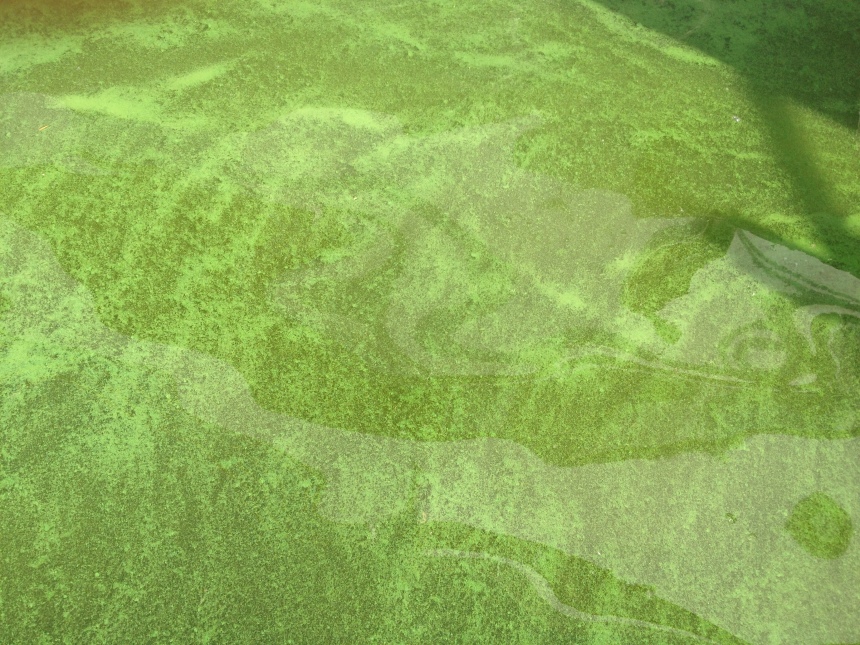In 2008, Minnesota voters passed the Clean Water, Land and Legacy Amendment to protect and support clean water, healthy habitat, vibrant arts and culture, and beloved parks and trails. Over the past ten years, a sales tax increase of 0.375% has generated more than $2.5 billion, $860 million of which has been used to fund water protection and restoration efforts around the state. In 2019, nearly $1.3 million in Clean Water Fund grants will be distributed to local government partners to support a variety of projects including keeping phosphorus out of the St. Croix River, improving water quality in Bone and Moody Lakes, protecting Brown’s and Valley Creeks, and conducting studies to identify the best locations for lake improvement projects in Washington County.

Battling algae in Lake St. Croix
Studies by the St. Croix Watershed Research Station have shown that three times more phosphorus flows into the St. Croix River now than 100 years ago. Though phosphorus is natural, too much phosphorus in the water causes algae to grow out of control, especially in the slow-moving stretch from Stillwater to Prescott which is known as Lake St. Croix. Since 2012, Minnesota and Wisconsin have been working toward a goal of reducing phosphorus loading to Lake St. Croix by 27% in order to reduce algae growth and meet water quality standards. Middle St. Croix Watershed Management Organization has identified numerous locations along the St. Croix River between Bayport and Afton where projects would help to filter runoff and repair eroding gullies and ravines. This year, the organization will receive $200,000 in Clean Water Funding to begin installing some of these projects. The organization hopes to reduce phosphorus loading by ten pounds per year, which is equivalent to 5000 pounds of algae.

Cleaner water for Bone and Moody Lakes
Ten years ago, Bone Lake in Scandia was considered to be one of the worst lakes in Washington County. The water was murky, phosphorus and algae levels were high, and the Metropolitan Council gave the lake an “F” on its annual report card. Now, thanks to several large projects led by the Comfort Lake – Forest Lake Watershed District, the lake is on its way to better health and has inched its way up to a grade of C+. A new $144,000 grant will help the watershed district to continue this work, implementing additional projects around Bone and nearby Moody Lake. The district has identified ten high-value projects that will keep an additional 24 pounds per year of phosphorus out of Moody Lake and 90 pounds per year out of Bone Lake.

Saving trout in Brown’s and Valley Creeks
In central Washington County, two large grants will help to fund protection and restoration projects along Brown’s and Valley Creeks, both of which are designated trout streams.
The Valley Branch Watershed District will use a $405,000 grant to stabilize a large ravine that currently deposits seven tons of sediment into the creek each year. The project will help to protect trout spawning sites, which are frequently silted over due to the erosion. It will also reduce phosphorus to Valley Creek and downstream Lake St. Croix by 51 pounds per year.
In Stillwater, $360,000 will help Brown’s Creek Watershed District to develop stormwater harvest and reuse systems with the city and local golf courses in order to minimize groundwater pumping, keep warm water from flowing into the trout stream, and reduce phosphorus flowing downstream to the St. Croix River. The goal is to keep 67-124 pounds per year of phosphorus out of the St. Croix River and lower water temperatures in Brown’s Creek so that more trout are able to survive and reproduce.

Using research to identify high-value water-improvement projects
Two grants will be used to help local government partners identify the best locations and projects to address runoff water pollution in Washington County.
The Carnelian-Marine- St. Croix Watershed District in northeastern Washington County will use $127,800 to conduct subwatershed analyses for six high priority lakes that the district is targeting for protection or restoration: Big Carnelian, Little Carnelian, Square, Jellums, Long (Scandia) and Sand. Using computer modeling software, aerial imagery, and on-the-ground research, the district will identify locations and practices that will best help to keep sediment and nutrients from flowing into these lakes. Potential projects will be ranked with a cost-benefit analysis.

A separate $200,000 Clean Water grant will help metro area Soil and Water Conservation Districts to train new staff and update computer modeling used in subwatershed analyses since 2009. The funds will also be used to conduct 15 additional subwatershed analyses in metro area counties, including Washington.
Funds generated through the Legacy Amendment will continue to support clean water, habitat, arts and culture, and parks and trails projects until the year 2034.
